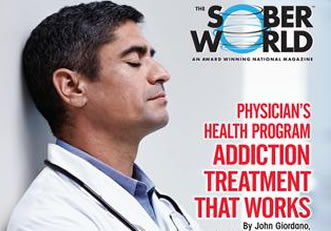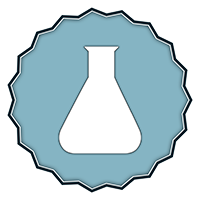From all outward appearances Dr. Peter Grinspoon looks to be the epitome of success. The Harvard trained physician has an accomplished wife, practices as a primary care physician at Massachusetts General Hospital’s Chelsea clinic and teaches medicine at his alma mater, Harvard Medical School.
He spent five years as a Campaign Director at Greenpeace before med school. If you asked Dr. Grinspoon today what his greatest accomplishment is he might just answer that he is proudly ten years clean.
Dr. Grinspoon is not alone. In 2014, 21.5 million Americans over the age of 12 – or nearly 10% of the total U.S. population – battled some form of a substance use disorder according to the National Survey on Drug Use and Health (NSDUH). But only a fraction of those people, roughly 11% of the people with a substance use disorder, are being treated.
The rate of abuse rises to 15% when you focus strictly on physicians. That means that you have a one in seven chance of being treated by a doctor with a substance use disorder every time you visit a medical facility. This is not a surprising statistic when you consider that out of all practicing physicians in the U.S., one out of twelve receives a payment involving an opioid according to the American Journal of Public Health.
Physicians like Grinspoon are inundated with opioids and it has been a problem for quite some time. It was in the late 50s when state medical boards began formulating plans to address physicians’ substance use disorders. However it was in February 1973 when a seminal policy paper – prepared by the AMA Council on Mental Health and published in and the Journal of the American Medical Association (JAMA) – forced the medical community to act. The landmark paper titled, “The Sick Physician: Impairment by Psychiatric Disorders, Including Alcoholism and Drug Dependence” exposed the pervasiveness of substance use disorder among physicians.
Soon after “The Sick Physician” was in print state medical boards, with support from the American Medical Association, laid the foundation for the Physician’s Health Program (PHP) specifically designed to treat addicted physicians. Today there are comprehensive PHPs in all but four states: California, Georgia, Nebraska and Wisconsin.
Because every state oversees its own Physician’s Health Program, there a slight differences between them. However the core principles they have in common are:
- – Physician’s Health Programs are all abstinence-based.
- – Physicians must abstain from any alcohol and/or drugs for a minimum of 5 years. There are frequent random tests conducted within that time frame. –90 days Residential treatment – this is key. In most states, physicians are required to complete a minimum of 90 days of intense in house residential treatment; and in some instances up to 180 days.
- – Treatment is based on the 12-step program and principles of Narcotics Anonymous
- – There is individual and group therapy, profession-specific peer support groups in addition to family counseling
- – Addiction education
- – Life skills training
- – Relapse prevention planning
It is important to note that any deviation from the Physician’s Health Program by a doctor in the program can initiate the revocation process of her or her license to practice medicine.
Astonishingly, the Physician’s Health Program has a 79% success rate!
There are a lot of take-aways from the Physician’s Health Program that you should be aware of. First and foremost is the fact that all PHP’s are abstinence-based. To the best of my knowledge, there is no plan in any state permitting physicians to use MAT drugs such as methadone and/or Suboxone as part of their treatment or recovery. Medication-assisted addiction treatments (MAT) are not even part of the conversation.
The Physician’s Health Program plan incorporates a long term monitoring and support component with stricter guidelines than what you’ll find in most other treatment plans. In fact some have argued that the success of the PHP lies in the leverage of a physician could lose their license if they fail a drug test. This brings to mind the old idiom ‘the carrot and the stick’ with an emphasis on stick. Is an individual more motivated by reward or pain? Everyone is unique which is why the theory certainly needs to be considered, but to what degree. The vast majority of addicts I’ve treated over thirty-plus years all want to slay their demons and get on with their drug-free lives. Are physicians any different? Regardless of a person’s motivation, it is my belief that the long term monitoring and support helps people stay on tract in their recovery.
Most, if not all, of the treatment involved in the Physician’s Health Program is what you will find in a reputable addiction treatment center. One of the key elements in PHPs that is missing in treatment you or I receive is the long term or residential treatment, 90 – 180 days compared to 30.
This has been a pet peeve of mine for quite some time. The medical communities including addiction treatment all know that longer termed residential treatment in a quality treatment program plays an enormous role in successful recoveries. The successful Physician’s Health Programs prove it beyond any doubt. Yet here we are in the throes of the worst opioid epidemic know to mankind and the best most insurance companies are willing to cover is 30 days. Their reasoning has no bases in science or medicine – it’s literally an arbitrary number plucked out of thin air.
For all intent and purposes, the insurance industry is controlling your treatment. The profit they pay out to their board of directors and shareholders comes directly from what they do not pay for your treatment. They have their own case managers that are in contact with treatment centers daily looking for ways (medical necessity) to prematurely end a policyholder’s treatment. Their case managers have the power to over rule tenured and experienced addiction doctors and therapists. I have been told on multiple occasions by reputable treatment center owners that they have a hard enough time trying to keep someone in treatment for the full 30 days, much less 90, because of the insurance industries profit-driven policies.
If you want the best addiction treatment than adopt the program your physicians choose for themselves and their loved ones. Unfortunately, the gold standard of addiction treatment is only available to a select few. This is a reality we are going to face for quite some time.
That being said, a comprehensive aftercare program that is built on the principles of a quality treatment program is more important in a person’s recovery today than ever before. As evidenced by the success of the Physician’s Health Programs and a mountain of supporting medical and scientific studies, we know that the longer a person is in treatment the better the outcome. A good aftercare program will not only pickup where the treatment center left off but will also reinforce what has been accomplished in treatment. They provide the tools and a strong foundation for a sustained recovery. They also teach the coping mechanisms that have proved to be invaluable in achieving a long and successful recovery.
The gold standard may not be available to you as a single package. However adding a comprehensive aftercare program to a quality treatment program will go a long way in developing a sustainable and fulfilling recovery.
John Giordano, Doctor of Humane Letters, MAC, CAP, is the founder of ‘Life Enhancement Aftercare Recovery Center,’ an Addiction Treatment Consultant, President and Founder of the National Institute For Holistic Addiction Studies, Chaplain of the North Miami Police Department and is the Second Vice President of the Greater North Miami Beach Chamber of Commerce. He is on the editorial board of the highly respected scientific Journal of Reward Deficiency Syndrome (JRDS) and has contributed to over 65 papers published in peer-reviewed scientific and medical journals.


